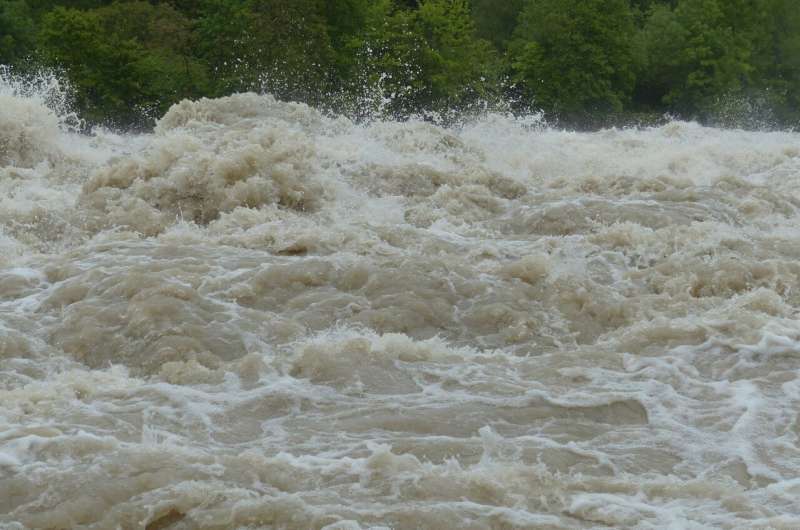Rivers are warming at the same rate as the atmosphere

Researchers at EPFL and the Swiss Federal Institute for Forest, Snow and Landscape Research (WSL) have found that the temperature of Swiss rivers is rising steadily. This situation is straining ecosystems and could limit the use of this water in Switzerland's nuclear and hydropower industries.
For a long time, meltwater from snow and glaciers has limited the warming of the Swiss rivers, allowing them to maintain a relatively low temperature throughout the year. But summer temperature spikes, especially since the turn of the century, are threatening to upset this delicate balance. In 2018, Swiss conservationists had to move fish populations to higher-altitude streams to prevent certain death from overheating, water shortage and disease.
In a study published in the journal Hydrology and Earth System Sciences, researchers at EPFL's Laboratory of Cryospheric Sciences (CRYOS), the Swiss Federal Institute for Forest, Snow and Landscape Research (WSL), UNIL, UNIBE and Crealp set out to investigate what was happening. The team analyzed river temperature and discharge trends across Switzerland using two data sets—post-1979 records from 33 measurement sites, and post-1999 records from 52 sites. They observed that river waters had warmed by an average of 0.33°C per decade since 1980, and by 0.37°C per decade in the last 20 years.
"We were surprised to find that Swiss rivers are warming at 95% of the rate of the surrounding air," says Adrien Michel, a doctoral assistant at the CRYOS lab and the paper's lead author. "The conventional wisdom was that the melting of snow and glaciers and the fact that this water then flowed into lakes were counteracting the effect of warmer air on the Swiss plateau. That's no longer the case."
The researchers also observed a 3% average decrease in discharge over the past 40 years, and a 10% decrease in the last two decades. If this trend continues, summer temperature spikes in rivers and streams are likely to become more severe because of the lower volume of water—especially once the glacial melt process is complete.
Threshold effect
Michel believes that the findings have important implications for weather forecasting and climate change adaptation strategies, not least for plant and wildlife populations. "There's a commonly held belief that one or two degrees of warming won't make much difference," he explains. "The truth is that these ecosystems aren't resilient enough to cope when the temperature exceeds certain thresholds several times a year, especially in summer. A few degrees' warming means we're going to see those thresholds surpassed much more often." In other words, global warming—reaching up to 2°C in winter and 4°C in summer—is placing entire ecosystems under strain. And although moving fish populations to higher ground is one possible solution, Michel argues that such a move has unknown and potentially adverse consequences for the host alpine ecosystem.
Open-source model
River warming is also impacting Switzerland's nuclear power industry. In the summer of 2018, legal requirements forced the Mühleberg power plant to decrease output because the Aar River, from which it draws water to cool its systems, was too warm.
This latest study is part of Hydro-CH2018, a research program funded by the Swiss Federal Office for the Environment that aims to close gaps in scientists' understanding of the impact of climate change on water resources in Switzerland. The team developed an open-source mathematical model and published a detailed methodology for ease of comparison with other data sets.
More information: Adrien Michel et al. Stream temperature and discharge evolution in Switzerland over the last 50 years: annual and seasonal behaviour, Hydrology and Earth System Sciences (2020). DOI: 10.5194/hess-24-115-2020
Provided by Ecole Polytechnique Federale de Lausanne




















